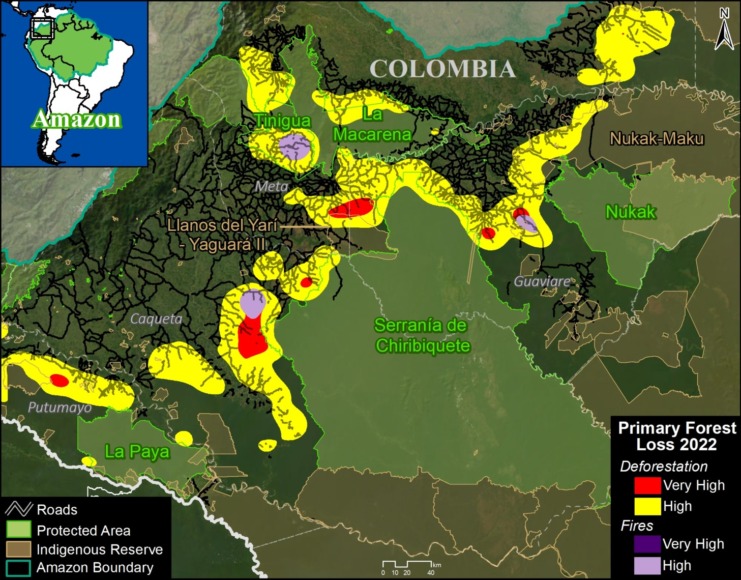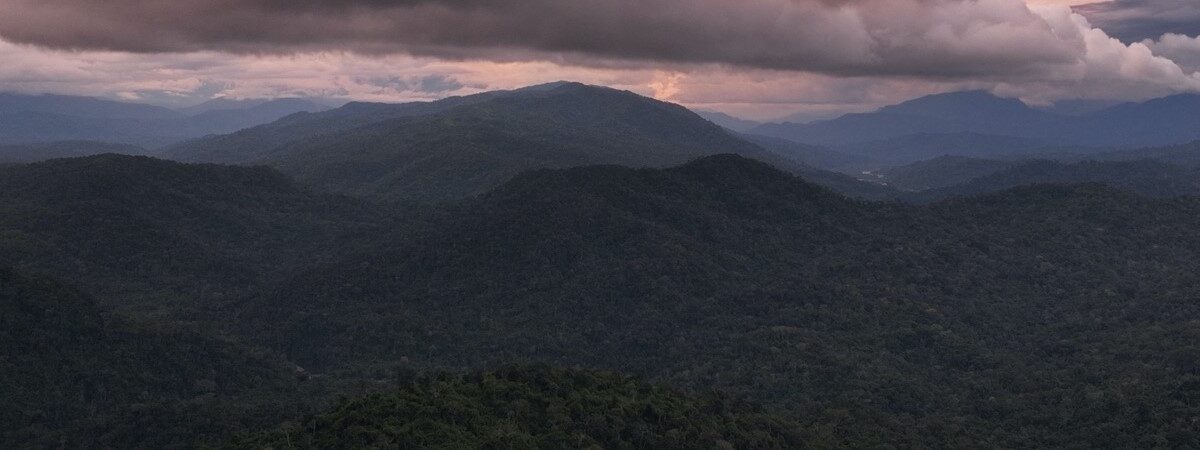- An estimated 1.98 million hectares (4.89 million acres) of forest were cleared in 2022, a 21% increase from 2021.
- It was the worst year for deforestation since 2004, according to Amazon Conservation’s Monitoring of the Amazon Project (MAAP), which analyzed satellite readings from Global Forest Watch.
- The deforestation was caused by cattle ranching, agriculture, mining and road projects in Brazil, Bolivia, Peru, Colombia, Ecuador and Venezuela.
Last year, the Amazon saw some of the highest rates of deforestation in over a decade, due to a combination of cattle ranching, agriculture, mining and road projects that cleared millions of acres of rainforest.
An estimated 1.98 million hectares (4.89 million acres) of forest were cleared in 2022, a 21% increase from 2021 and the highest figure on record except for 2004, when over 2 million hectares (about 5 million acres) were lost.
“The 2022 deforestation data is a stark reminder that we are in a race against time for the Amazon. With deforestation rates the highest they have been since 2004, the ecological integrity of the Amazon is in jeopardy,” said Leila Salazar-López, executive director of Amazon Watch.
The figures come from Global Forest Watch satellite readings on deforestation and fire hotspots, which were processed and published in a report by Amazon Conservation’s Monitoring of the Amazon Project (MAAP).
All six countries that share the Amazon Rainforest — Brazil, Bolivia, Peru, Colombia, Ecuador and Venezuela — experienced deforestation last year, but none of them were hit as hard as Brazil. It lost a total of 1.4 million hectares (3.45 million acres) of primary forest, making it the worst year of deforestation since a historic peak between 2002 and 2005.

Former President Jair Bolsonaro, who left office at the end of last year, has been accused of worsening deforestation by failing to demarcate a single Indigenous territory while at the same time encouraging economic activity in the rainforest that led to some of the highest greenhouse gas emissions in years.
Satellite readings show that a lot of the forest loss is concentrated around roads, most notably the Trans-Amazonian Highway in the states of Amazonas, Pará, Rondônia and Acre. The incomplete BR-319 highway, connecting Manaus to Porto Velho, has been criticized by conservationists who say the road will open up more areas of the rainforest to human activity.
The country with the second-worst deforestation was Bolivia, which saw 245,177 hectares (605,845 acres) of deforestation last year, by far the highest rate for the country on record. It was a 47% jump from 2021. Fires also directly impacted another 106,922 hectares (264,210 acres).
The deforestation was mostly driven by soy production in the southeast department of Santa Cruz, according to MAAP. The country has also seen a growing presence of Mennonite communities over the last two decades, with much of the land being encroached upon under questionable legal circumstances.
Peru is also struggling with a Mennonite problem in the central Amazon. A separate MAAP report last year found that various colonies were responsible for nearly 5,000 hectares (12,355 acres) of deforestation. And while that and gold mining have received the most attention from policymakers and conservationists, the data suggests that much of the 144,682 hectares (357,517 acres) lost last year in Peru actually came from small-scale agriculture.
“We focus on the most obvious cases, like the gold mining and the Mennonites,” said Matt Finer, MAAP director and senior research specialist at Amazon Conservation. “We really target those cases because they’re important, but then you still have this 90% that’s a slow death by a thousand cuts — the expansion that no one really has a handle on.”

Colombia saw 97,417 hectares (240,722 acres) of deforestation last year, making it the only country to experience a decrease from the previous year, albeit by just 2%. Most of it took place in a corridor that cuts through the central departments of Caquetá, Meta, and Guaviare. Protected areas there — such as Chiribiquete National Park and Nukak Maku Indigenous reserve — have been fending off cattle ranchers and guerrilla groups.
Ecuador, although having a much smaller piece of the Amazon than the other countries, suffered a proportionally higher spike in deforestation. It lost 18,902 hectares (46,707 acres) last year — up 80% from 2021. In addition to mining, much of that can be attributed to palm oil and other agricultural plantations.
Now moving into 2023, there’s some concern that the El Niño warm front will exacerbate fires and increase forest loss for the year. But there’s also hope that a change in government in Brazil — now under the more environmentally friendly President Lula da Silva — will lower deforestation rates for much of the Amazon.
“We’re optimistic about things going down in Brazil with Lula,” Finer said. “But I still think the rest of the Amazon is still much lower profile. I don’t think many aren’t paying enough attention to what’s going on.”
Banner image: The Peruvian Amazon. Photo by Rhett A. Butler
FEEDBACK: Use this form to send a message to the author of this post. If you want to post a public comment, you can do that at the bottom of the page.
See related from this reporter:
Not all parts of the Amazon will survive future droughts, study says
